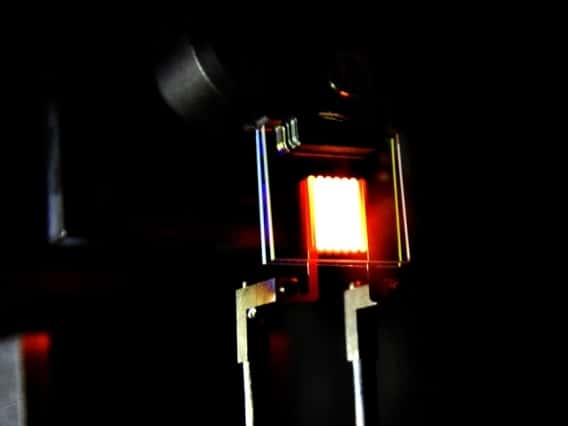

A group of researchers at the Massachusetts Institute of Technology have designed a new take on the old-fashioned incandescent light bulb and developed a “new” efficient lightbulb.
Currently becoming something of a stranger in many Canadian households, the incandescent, which dates back 130 years to its inventor Thomas Edison, has recently been shelved in favour of the more energy efficient compact fluorescent and LED bulbs (the Canadian government banned the manufacture and import of incandescent bulbs in 2015).
But with the MIT’s new invention, we may have a comeback in the making.
In a study published this month in Nature Nanotechnology, the MIT team describes its prototype which features a photonic structure called a nanofilter that surrounds the filament within the lightbulb. This nanofilter allows visible light to be projected outwards while redirecting the energy emitted as heat back to the filament to be reabsorbed and then re-emitted as visible light.
The MIT researchers call it “recycled light.” Marin Soljačić, professor of physics at MIT, says “It is the combination of the exceptional properties of the filter and the shape of the filament that enabled substantial recycling of unwanted radiated light.”
Importantly, the filter can be adapted to allow a range of light wavelengths to shine through, leaving the rest to be reflected back to the source. This could prove a huge advantage over fluorescents and LED’s, whose emitted light does not give off that warm glow of an incandescent. To measure this glow, the colour rendering index is based on a scale of 100, with 100 representing a strong match between the light source and the colour of objects in natural daylight. LED and fluorescents commonly produce ratings around 80 or less.
And whereas the efficiency of traditional incandescent bulbs is a lowly 2 to 3 percent, MIT News reports that the recycling light bulb has so far achieved an efficiency of 6.6 percent, with the potential for efficiency as high as 40 percent. (Fluorescents rank between 7 and 15 percent and LEDs between 5 and 15 percent.)
But beyond the light bulb, the new technology will likely have other applications, including for the photovoltaic industry. Dr. Gang Chen of the MIT team says, “The lighting potential of this technology is exciting, but the same approach could also be used to improve the performance of energy conversion schemes such as thermo-photovoltaics.”
Solar power is big business everywhere, including here in Canada. According to the Globe and Mail, solar power in Canada is growing exponentially. In 2003, there were only 12 megawatts of installed solar photovoltaic capacity in Canada. By 2015, over 100 times more was being produced, notably due to Ontario’s Green Energy Act which encouraged renewable energy production through feed-in tariff rates for small and large renewable energy projects.
“Light radiated from a hot object can be quite useful, whether that object is an incandescent filament or the Sun,” Ognjen Ilic of the MIT team says. “A 3000-degree filament is one of the hottest and the most challenging sources to work with. It’s also what makes it a crucial test of our approach.”
Leave a Reply
You must be logged in to post a comment.




 Share
Share Tweet
Tweet Share
Share




Comment